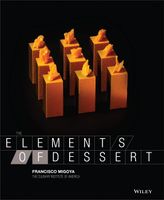Label
All
0
Clear all filters
🍝 Enjoy the cooking of Italy and save 25% on ckbk Membership 🇮🇹
The Ten Principles of Menu Composition
Appears in
Published 2012
- Try to not repeat ingredients. This means that if you have bananas in one item, keep it that way. Why have two desserts with the same ingredient?
- Always have one dark chocolate dessert, and if you must have another chocolate dessert (see point number 1), make it a different chocolate, such as milk, white, or a variation of chocolate such as gianduja or caramelized white chocolate. Chocolate desserts are always the top-selling menu item, unless you put something strange in them like beets, which kind of works but turns most people off. If you have a second chocolate dessert, it takes the pressure off the other chocolate dessert. Place the chocolate desserts at the end/bottom of the menu, so that the customers will see the other options and perhaps decide upon a nonchocolate dessert. When a person looks at a menu, statistically, the eye is always drawn to the top right-hand side of a page. Place whatever you want to draw attention to there. Do not place a chocolate dessert there because the customer will see it and then not even look at what else you have to offer.
- You don’t always have to use fruit. As mentioned before, if you live in an area that does not produce fruit (or vegetables, for that matter) during the late fall, winter, and early spring, utilize other ingredients.
- When it’s in season, use the fruit. It is a great way to showcase an ingredient that people want to taste after a year of not having it. Using fruit will also lower your food costs, and you will have an ingredient that requires little manipulation.
- Not every dessert has to have a frozen component. Often there are menus that have eight different items, and they all have some sort of ice cream or sorbet.
- How many dessert items are on the menu depends on how much you can handle reasonably during a busy service without shooting yourself in the foot and compromising the customer’s experience. This is also determined by the type of establishment. But in reality, why have twenty desserts on a menu? No one needs that many options. Five to eight items is a good, reasonable average number.
- Keep the wording simple and straightforward (see the enunciation advice that follows).
- Proofread your menu. Spell Check is a useful tool. Use it. If there is a foreign word on your menu, look for the correct spelling.
- Your name does not necessarily have to be on the menu.
- Not everyone will understand your humor, so be cautious when including it on the menu. In fact, some might confuse humor for something completely different.
Become a Premium Member to access this page
Unlimited, ad-free access to hundreds of the world’s best cookbooks
Over 150,000 recipes with thousands more added every month
Recommended by leading chefs and food writers
Powerful search filters to match your tastes
Create collections and add reviews or private notes to any recipe
Swipe to browse each cookbook from cover-to-cover
Manage your subscription via the My Membership page
Best value
Part of
Advertisement
Advertisement
The licensor does not allow printing of this title


